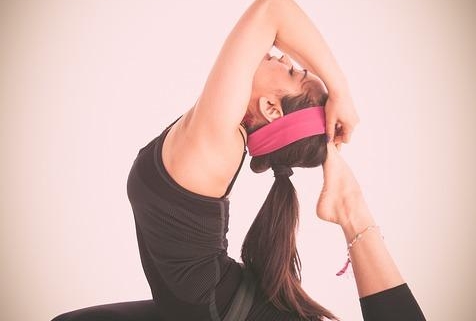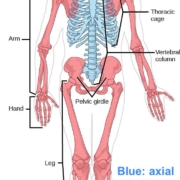5 Key MSK Benefits of Yoga: Flexibility, Strength, Relief
Unlocking Wellness: 5 Key MSK Benefits of Yoga – Adaptability,Strength,Relief
In today’s fast-paced world,where stress and physical strain frequently enough take center stage,finding a holistic approach to well-being is more critically important than ever. Enter yoga—a practice that transcends mere physical exercise to offer a pathway to improved musculoskeletal (MSK) health. In this listicle, we’ll explore five essential benefits of yoga that can transform your body and mind. From enhanced flexibility to increased strength and profound relief from discomfort, each benefit contributes to a more balanced and resilient you.Whether you’re a seasoned yogi or a curious newcomer, this guide will illuminate how integrating yoga into your routine can lead to a healthier, more vibrant life.Get ready to discover the transformative power of yoga!
1) Flexibility: one of the most celebrated benefits of yoga is its ability to enhance flexibility. Regular practice encourages the stretching of muscles and the loosening of joints, which can lead to improved range of motion and reduced stiffness. As practitioners flow through various poses, they gradually increase their body’s adaptability, making everyday movements easier and more fluid
Yoga’s transformative power lies in its ability to enhance flexibility, a benefit that resonates with both seasoned practitioners and newcomers alike. As individuals engage in a variety of poses, they gently stretch their muscles and loosen their joints, fostering a deeper connection with their bodies. This process not only promotes an increased range of motion but also alleviates stiffness that can accumulate from daily activities or sedentary lifestyles. Over time, the consistent practice of yoga cultivates a sense of adaptability, allowing practitioners to move with greater ease and grace in their everyday lives.
Incorporating yoga into your routine can lead to remarkable improvements in flexibility. Here are some key aspects to consider:
- Dynamic Stretching: Poses that require movement help warm up the muscles, making them more pliable.
- Static Stretching: Holding poses for longer durations encourages deeper muscle release and elongation.
- mind-Body Connection: Focusing on breath during practice enhances awareness, promoting a more mindful approach to stretching.
For those tracking their progress, consider using a simple table to monitor flexibility improvements over time:
| pose | Initial Flexibility level | Current Flexibility Level | Notes |
|---|---|---|---|
| Forward bend | 10 inches from floor | Touching toes | improved hamstring flexibility |
| Warrior II | Limited hip rotation | Full rotation | Enhanced hip mobility |
| Bridge Pose | Stiff back | Comfortable lift | increased spine flexibility |
2) Strength: Yoga is not just about bending and stretching; it also builds strength. Many poses require the engagement of multiple muscle groups simultaneously, promoting functional strength that supports overall physical health. This newfound strength can translate into better performance in other physical activities,making yoga a valuable complement to conventional strength training
Yoga is often perceived as a gentle practice focused solely on flexibility,but it is equally a powerful tool for building strength. Many yoga poses, such as Warrior II, Plank, and chair Pose, require the simultaneous engagement of various muscle groups. This multi-muscle activation not only enhances muscle endurance but also fosters functional strength, which is crucial for everyday movements. As you hold these poses, your body learns to stabilize and support itself, resulting in improved core strength and overall stability.
Incorporating yoga into your fitness routine can lead to notable benefits in other physical activities. The strength gained through yoga can enhance your performance in traditional strength training, sports, and even daily tasks. As a notable example, athletes frequently enough find that their agility and balance improve with a consistent yoga practice, allowing them to perform better in their respective sports. Below is a simple comparison of how yoga strength training complements other forms of exercise:
| Type of Exercise | Benefits of Yoga Strength |
|---|---|
| Weightlifting | Improved core stability and posture |
| Running | enhanced balance and reduced injury risk |
| Team Sports | Better agility and coordination |
3) Pain Relief: For many, yoga serves as a natural remedy for pain relief, particularly in the musculoskeletal (MSK) system. The combination of gentle movement, mindful breathing, and relaxation techniques can alleviate tension, reduce inflammation, and promote healing. Whether dealing with chronic pain or post-injury recovery, yoga offers a holistic approach to managing discomfort
For many individuals, yoga emerges as a powerful ally in the quest for pain relief, particularly when it comes to issues within the musculoskeletal (MSK) system. The gentle movements inherent in yoga practice help to release built-up tension in muscles and joints, making it an effective method for those suffering from chronic pain conditions such as arthritis or lower back pain. By integrating mindful breathing techniques, practitioners can tap into their body’s natural relaxation response, which not only alleviates discomfort but also aids in reducing inflammation and enhancing overall mobility.
Moreover, yoga fosters a holistic approach to healing, encouraging individuals to connect their physical sensations with emotional well-being. This connection can be particularly beneficial for those recovering from injuries,as it promotes a sense of control and mindfulness during the rehabilitation process. Some key benefits of yoga for pain relief include:
- Improved flexibility: Enhanced range of motion can help prevent further injuries.
- Muscle strengthening: Building strength in supporting muscles can alleviate strain on injured areas.
- Stress reduction: Lowering stress levels can substantially impact pain perception.
4) Posture Improvement: Poor posture is a common issue in today’s sedentary lifestyle, leading to a host of MSK problems. Yoga emphasizes body awareness and alignment, helping practitioners identify and correct imbalances. By strengthening the core and supporting muscles, yoga can lead to better posture, reducing strain on the spine and promoting overall spinal health
In today’s fast-paced world, many individuals find themselves hunched over desks or glued to screens for hours on end. This sedentary lifestyle can lead to a myriad of musculoskeletal (MSK) issues, primarily stemming from poor posture. Yoga serves as a powerful antidote, as it encourages practitioners to cultivate body awareness and alignment. By engaging in various asanas, individuals learn to recognize their habitual postural patterns and make conscious adjustments. this heightened awareness fosters a deeper connection with the body, allowing for the identification and correction of imbalances that can contribute to discomfort and pain.
Furthermore, yoga strengthens the core and surrounding muscles, which are essential for maintaining proper posture. A strong core provides stability and support for the spine, reducing unneeded strain and promoting overall spinal health. Through targeted poses, such as Plank, Bridge, and Mountain Pose, practitioners can enhance their muscular endurance and flexibility. As an inevitable result,the benefits of improved posture extend beyond aesthetics; they contribute to better breathing,enhanced circulation,and a greater sense of well-being. Consider the following table that highlights key yoga poses beneficial for posture improvement:
| Yoga Pose | Benefits |
|---|---|
| Mountain Pose | Promotes alignment and stability |
| Bridge Pose | Strengthens the back and opens the chest |
| Cat-Cow Stretch | Enhances spinal flexibility and posture |
| Child’s Pose | Releases tension in the back and shoulders |
5) Stress Reduction: the practice of yoga goes beyond physical benefits; it also nurtures mental well-being. The meditative aspects of yoga encourage relaxation and mindfulness, which can significantly reduce stress levels. Lower stress not only enhances mental clarity but also contributes to better physical health, as stress is often a contributing factor to musculoskeletal tension and discomfort
the journey of yoga transcends mere physical postures; it delves deep into the realms of mental tranquility and emotional balance. One of the most profound aspects of yoga is its ability to cultivate mindfulness and awareness, encouraging practitioners to focus on the present moment. This practice acts as a sanctuary from the chaos of daily life, allowing individuals to step back and breathe. As a result, the meditative elements of yoga can lead to a significant reduction in cortisol levels, the hormone primarily responsible for stress. By integrating deep breathing and focused intention, yoga not only calms the mind but also helps in releasing pent-up tension within the body, fostering an surroundings conducive to relaxation and peace.
Moreover, the benefits of reduced stress extend well beyond mental clarity. When stress levels decrease, the body responds positively, frequently enough leading to a decrease in musculoskeletal discomfort. Chronic stress has been linked to various physical ailments, including tension headaches, back pain, and neck stiffness. By practicing yoga regularly, individuals can experience a holistic approach to well-being that encompasses both mind and body. The following table illustrates the connection between stress reduction and its physical manifestations:
| Stress Reduction Benefits | Physical Improvements |
|---|---|
| Lower cortisol levels | reduced muscle tension |
| Enhanced mindfulness | Improved posture |
| Increased relaxation | Less chronic pain |
| Greater emotional balance | Better sleep quality |
In Conclusion
As we conclude our exploration of the five key musculoskeletal benefits of yoga—flexibility,strength,relief,balance,and mindfulness—it’s clear that this ancient practice offers a holistic approach to enhancing our physical well-being. Whether you’re a seasoned yogi or a curious newcomer, incorporating yoga into your routine can lead to profound changes in how your body feels and functions. Remember, the journey to improved musculoskeletal health is not just about the poses you strike on the mat; it’s about cultivating a deeper connection with your body and mind. So,roll out your mat,breathe deeply,and embrace the transformative power of yoga. your body will thank you.










Leave a Reply
Want to join the discussion?Feel free to contribute!